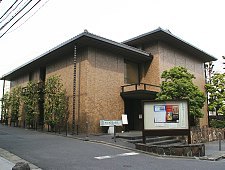Ukiyo-e (浮世絵) are Japanese woodblock prints which flourished during the Edo Period (1603-1867). They originated as popular culture in Edo (present day Tokyo) and depicted popular geisha, sumo wrestlers andkabuki actors from the world of entertainment. Ukiyo-e, literally "paintings of the floating world", were so named because their subjects were associated with impermanence and detachment from ordinary life.
At first ukiyo-e were monochrome, but by the mid 18th century polychrome prints were made. The woodblock printing technique enabled mass production which meant affordability, and therefore led to the popularity of these prints. New genres of ukiyo-e such as short story compilations and paintings of landscapes or historical events later became well received. The beginning of the 19th century saw the emergence of several outstanding ukiyo-e artists like Hokusai, Hiroshige and Utamaro, who created famous prints that are celebrated to this day.
The Meiji Period (1868-1912) saw an influx of Western technology into Japan such as photography, leading to diminished interest in ukiyo-e within Japan. Interestingly, however, the prints gained some prominence in Europe where they had an influence in the works of Impressionist painters. Nowadays, ukiyo-e can be appreciated at art galleries and museums across Japan. Below is a list of some of them:
 |
|
 |
|
 |
|
 |
|
 |
|
 |
|
Tidak ada komentar:
Posting Komentar